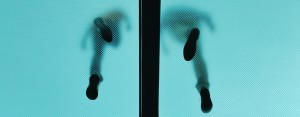Does X Associate with Y?
At a Glance
Discipline
- STEM
- Biology
Instructional Level
- College & CEGEP
- University
Course
- General Biology
Tasks in Workflow
Social Plane(s)
- Individual
- Group
Type of Tasks
- Collecting & seeking information
- Discussing
- Solving problems
- Reviewing & assessing peers
- Creating & designing
- Revising & improving
- Writing
- Taking a quiz & test
Technical Details
Useful Technologies
- Online learning platform with Wiki LTI
Time
- Semester long
Instructional Purpose
- Application & knowledge building
- Assessment & knowledge refinement
Overview
In this peer assessment-based activity, students work on a semester-long project researching a topic of interest in which they demonstrate how a quantifiable X variable (e.g., calcium) affects a quantifiable Y variable (e.g., hip fracture rates in women). The activity is performed in Moodle with wiki pages, though any other learning platform can be used.
Breakdown of project
- Students get into groups of 6-8 (depending on the size of the class).
- Students choose a topic they are interested in that meets the criteria outlined in the Group Project Instructions.
- Students come up with an outline for their project, and the instructor reviews the quality of the outline and provides feedback.
- Students work in their groups on the project.
- Groups are put into supergroups (~5 groups per supergroup). These supergroups separate teams for evaluation (feedback and evaluation)
- 1st draft: groups provide feedback on Moodle for the other teams in their supergroup. TAs also provide feedback.
- 2nd draft: repeat feedback steps performed for first draft.
Groups hand in their project and evaluate (grade-based) their peers’ projects in their supergroup. Students also evaluate the contribution of their other group members. The instructor and TA evaluate individual student contribution to the project.
Instructional Objectives
Students will be able to:
- Critically assess research presented in peer-reviewed, primary research articles.
- Cite and read peer-reviewed articles
- Define the components of a good research article (statistics, controls, methods, key questions addressed in the paper, etc.)
- Demonstrate autonomous critical thinking skills as well as collaborative skills working both as a team and individually
- Provide constructive criticism to their peers
- Evaluate their peers
Workflow & Materials

Activity Workflow
Applied Strategies
Published: 18/09/2018
Copyright: © 2024 Gray-Mitsumune. This is an open-access article distributed under the terms of the Creative Commons Attribution License (CC BY). The use, distribution or reproduction in other forums is permitted, provided the original author(s) and the copyright owner(s) are credited and that the original publication on this website is cited, in accordance with accepted academic practice. No use, distribution or reproduction is permitted which does not comply with these terms.



